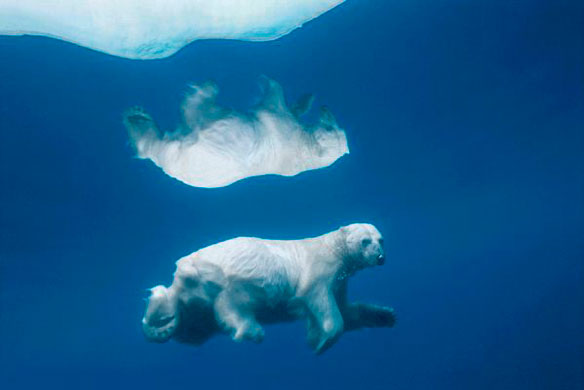By Dan Joling, AP
An Alaska petroleum industry trade group has sued the federal government over its designation of 187,157 square miles as polar bear critical habitat, claiming it covers too much territory and could cost tens of millions or more in economic effects.
The Alaska Oil and Gas Association sued Tuesday in Anchorage.
“This is an area larger that 48 of the 50 states, exceeding the size of the State of California by nearly 25,000 square miles,” association attorneys said in the lawsuit.
The designation is unprecedented, the largest area set aside in the history of the Endangered Species Act, and was done for an animal that is abundant, with 20,000 to 25,000 animals in 19 subpopulations, according to the group.
AOGA represents 15 companies that account for most oil and gas exploration, production, refining and marketing in Alaska. The group claims there is no evidence of an overall decline in the global polar bear population or its historical range.
That’s disputed by the Center for Biological Diversity, which petitioned to list bears.
“AOGA’s suit is premised on the fiction that polar bear populations are stable,” said attorney Brendan Cummings in an e-mail.
The two best-studied populations, western Hudson Bay and Southern Beaufort Sea, are known to be declining, he said. The polar bear specialist group of the International Union for Conservation of Nature lists eight of the world’s 19 subpopulations of polar bears as “declining,” including both of Alaska’s. Seven other subpopulations are listed as “data deficient” for making the call.
A U.S. Geological Survey model prepared before the listing suggested a better than 50 percent chance that polar bears will be extinct in Alaska’s Beaufort and Chukchi seas under the minimum sea ice model run by 2030. The USGS later noted its projections of sea ice decline appeared to be underestimated.
The Interior Department under former President George W. Bush declared polar bears a threatened species in 2008 because of the threat from diminishing sea ice.
The department announced its critical habitat designation in November. It includes large areas of sea ice off the Alaska coast, including areas where petroleum companies hope to drill in the Chukchi and Beaufort seas.
Designation of critical habitat does not automatically block development but requires federal officials to consider whether a proposed action would adversely affect the polar bear’s habitat and interfere with its recovery.
The trade association said federal agencies underestimated economic effects of the designation and that it will cost tens of millions to billions of dollars. During testimony in June, director Marilyn Crockett said the designation would lead to project delays, additional consultations and expensive litigation.
The trade association said the designation was an abuse of discretion.
“The Service failed to balance the conservation benefits and the economic benefits to exclude areas where the benefits of exclusion outweigh the benefits of specifying such areas as part of the critical habitat,” the lawsuit said. The association also said polar bear habitat already is adequately managed and there’s a long history showing interaction between bears and the oil and gas industry has had no more than a negligible effect.
The lawsuit is the first filed in opposition to the critical habitat designation. The state of Alaska and a coalition of Alaska Native groups also have given the federal government a required 60-day notice that they intend to sue over the recovery plan for polar bears.
Alaska Sets Aside Critical Habitat For Polar Bears, in Coastal Care










